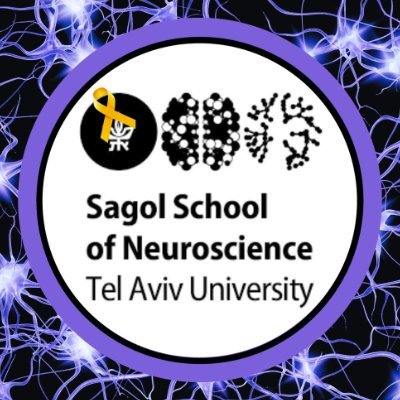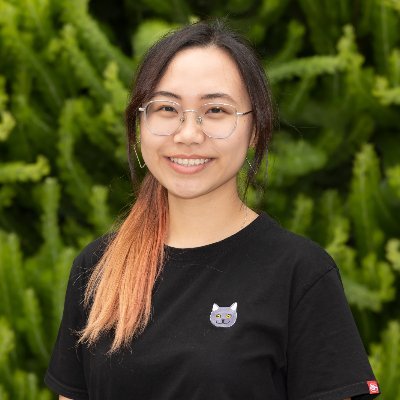
Eyal Rozenfeld
@Eyal_RozNeuroscientist | Drosophila olfaction | PhD @MosheParnas Lab | Incoming postdoc at the Dayu Lin Lab @nyulangone |
Similar User

@MosheParnas

@KatrinVogt3

@vikram0285

@drosofriend

@dissel_lab

@andrew_c_lin

@FialaLab

@BradKHulse

@ShaiIsrael2

@wolfhuette

@as_bates

@ChengHuangThu

@dsitaraman

@biorxiv_neursci

@MpiBrain
Thrilled to share my final PhD paper @MosheParnas, now published in @ScienceAdvances! 🎉 Check out the incredible (but sadly rejected) cover art proposal—no iconic @Ella_Maru selfie this time, though. 😉 #Science #PhDLife #PhDone
1/ How do animals integrate different forms of learning? Our @Eyal_Roz new study in @ScienceAdvances shows that active mechanisms prevent the co-formation of competing memories. Here’s what we found! 🧵👇 science.org/doi/10.1126/sc… Art by @Ella_Maru

📄 Want to see the full story? Dive into our paper here: science.org/doi/10.1126/sc…
Thrilled to share my final PhD paper @MosheParnas, now published in @ScienceAdvances! 🎉 Check out the incredible (but sadly rejected) cover art proposal—no iconic @Ella_Maru selfie this time, though. 😉 #Science #PhDLife #PhDone
1/ How do animals integrate different forms of learning? Our @Eyal_Roz new study in @ScienceAdvances shows that active mechanisms prevent the co-formation of competing memories. Here’s what we found! 🧵👇 science.org/doi/10.1126/sc… Art by @Ella_Maru

Congrats @Eyal_Roz and Shiko!
1/ How do animals integrate different forms of learning? Our @Eyal_Roz new study in @ScienceAdvances shows that active mechanisms prevent the co-formation of competing memories. Here’s what we found! 🧵👇 science.org/doi/10.1126/sc… Art by @Ella_Maru

Great work, congratulations!
1/ How do animals integrate different forms of learning? Our @Eyal_Roz new study in @ScienceAdvances shows that active mechanisms prevent the co-formation of competing memories. Here’s what we found! 🧵👇 science.org/doi/10.1126/sc… Art by @Ella_Maru

6/ Implications for Cognitive Science: Our findings challenge the hierarchical model of learning. Instead of additive memory formation, active processes separate these memories, allowing distinct behavioral strategies.
5/ Neuronal Circuit Insights: Operant learning requires the fly's navigation center (CX). CX activity gates plasticity, allowing operant learning while preventing interference from classical learning pathways. This active gating mechanism is key to resolving conflicting memories.

4/ Behavioral Differences: Flies show distinct behaviors after different types of conditioning. While classical learning leads to freezing, operant learning prompts active avoidance. This mirrors findings in mammalian studies suggesting shared cognitive principles across species.

3/ 🧑🔬 Surprising Discovery: Contrary to the dogma, we show that operant and classical learning cannot happen at the same time. If both forms of plasticity occur simultaneously, they interfere, leading to no effective learning. 🤯

2/ Classical vs. Operant Learning: Classical conditioning is passive, where an association is formed between a cue and an outcome. Operant conditioning is active, requiring the animal's action to influence the outcome. These different strategies involve separate brain circuits.

1/ How do animals integrate different forms of learning? Our @Eyal_Roz new study in @ScienceAdvances shows that active mechanisms prevent the co-formation of competing memories. Here’s what we found! 🧵👇 science.org/doi/10.1126/sc… Art by @Ella_Maru

🔥🔥🔥How do operant and classical learning operate without interference? Discover the beautiful work by Eyal Rozenfeld and Shiko Parnas @MosheParnas, who addressed this question with sophistication and elegance. Congratulations! science.org/doi/10.1126/sc…
this is a long shot, but does anyone have a video of a faculty chalk talk they would be willing to share with me? neuroscience or bioscience preferred, but I'll take what I can get :)
New from Shiko Parnas' lab: Classical & operant learning in *Drosophila* rely on distinct neuronal pathways, challenging current paradigms! @MosheParnas Unstoppable science.org/doi/10.1126/sc…
Check out our latest profile! Dr. Annegret Falkner (@Neurrriot) studies how social experiences and internal states shape behavior. To learn more & listen to the full interview, follow the link below! storiesofwin.org/profiles/2024/… #StoriesOfWiN #WomenInNeuroscience #WomenInNeuro
I'm thrilled to share this story! Flies tend to aggregate, as I’m sure you have experienced in your kitchen. They lay eggs around the same places and form clusters even in the absence of food. But, what happens when they meet other flies for the first time? ...
Super excited to share that my thesis work is out @Nature today. How does brain control visceral organs through brain-to-body sympathetic signals? 👇 nature.com/articles/s4158… Best Thanksgiving gift! Very grateful for my amazing advisor, colleagues and collaborators.
Being raised alone makes flies afraid of one another! But exposure to other flies makes them become sociable. @VLobatoRios found and recorded specific learning circuits in the brain that regulate this transition. Read more in our new preprint: biorxiv.org/content/10.110…

With thanksgiving and face-stuffing season right around the corner 🍗🥧🍠 we present a deep dive into eating behaviors @AnnualReviews - across flies and mammals! w/ Nilay Yapici, Wenshuai Jiang and @namanagrawal97 Enjoy! annualreviews.org/content/journa…

United States Trends
- 1. #IDontWantToOverreactBUT N/A
- 2. #Superman 26,6 B posts
- 3. #mondaymotivation 23,4 B posts
- 4. #SkylineSweeps N/A
- 5. Good Monday 53,2 B posts
- 6. Victory Monday 1.909 posts
- 7. Big Bass Xmas Extreme N/A
- 8. #HALLUCINATION 27 B posts
- 9. John Williams 1.025 posts
- 10. Immanuel 5.323 posts
- 11. Boston Tea Party 2.800 posts
- 12. Burna 33,1 B posts
- 13. Look Up 97,7 B posts
- 14. $PENGU 23,3 B posts
- 15. Jerod Mayo 1.985 posts
- 16. Trump 2028 10,1 B posts
- 17. Feliz Navidad 23,9 B posts
- 18. MicroStrategy 19,3 B posts
- 19. MARK LEE 90,7 B posts
- 20. Mona Lisa 43,3 B posts
Who to follow
-
 Moshe Parnas
Moshe Parnas
@MosheParnas -
 Katrin Vogt
Katrin Vogt
@KatrinVogt3 -
 Vikram Vijayan
Vikram Vijayan
@vikram0285 -
 drosofriend
drosofriend
@drosofriend -
 Dissel Lab
Dissel Lab
@dissel_lab -
 Andrew Lin
Andrew Lin
@andrew_c_lin -
 Fiala Lab
Fiala Lab
@FialaLab -
 Brad Hulse
Brad Hulse
@BradKHulse -
 Shai Israel
Shai Israel
@ShaiIsrael2 -
 Wolf Huetteroth @[email protected]
Wolf Huetteroth @[email protected]
@wolfhuette -
 Alexander Bates
Alexander Bates
@as_bates -
 Cheng Huang
Cheng Huang
@ChengHuangThu -
 Divya Sitaraman
Divya Sitaraman
@dsitaraman -
 bioRxiv Neuroscience
bioRxiv Neuroscience
@biorxiv_neursci -
 MPI for Brain Research
MPI for Brain Research
@MpiBrain
Something went wrong.
Something went wrong.







































































































